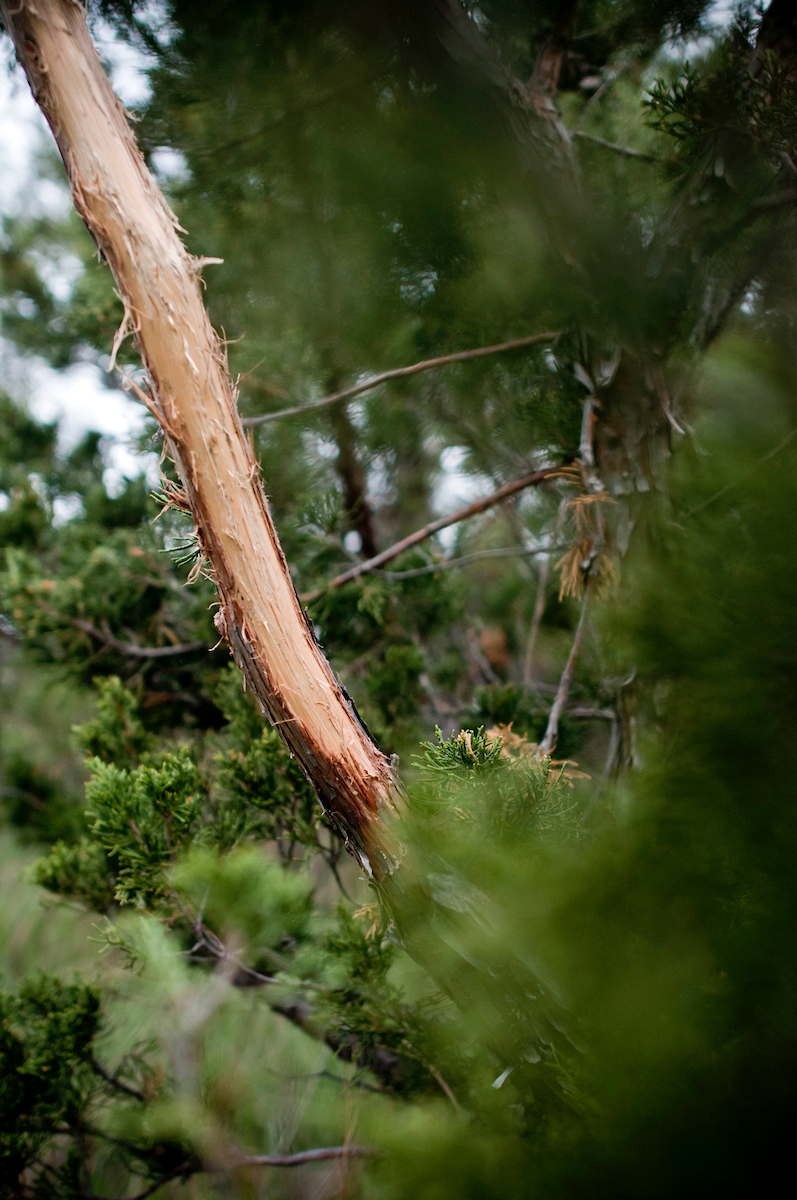Few things fascinate hunters more than the bright scars bucks leave on trees. Here are 14 insights buck rubs provide. Each can help you formulate a strategy to improve pre-season scouting and lead to more successful fall hunting.
1. A buck's declaration
Bucks rub trees to leave scent and visual markings that declare their presence, release hormonal tension, and bulk up neck and shoulder muscles.
2. A deposit station
Buck rubs are visual signs, yes. But they’re also stations to deposit scent in the form of primer pheromones. These show a buck’s social status, stimulate does and suppress sex drives of younger bucks.
3. An older buck's game
Mature bucks rub 3-4 times more than younger males and start earlier.
4. Size the tree, age the buck
All bucks will rub small trees of 1-3 inches in diameter. Four-inch or thicker trees are rubbed mostly by three-year or older bucks.
5. Rub lines and travel patterns
When scouting early, search for rub lines more than individual rubs. These reveal routes bucks use. They also help hunters find crucial bed-to-feed travel patterns.
6. Single rubs and the rut
During the rut, fresh individual buck rubs are more important since they pinpoint a buck’s current location with a hot doe.
7. Rubs an early-season stand sites
Boundary rubs are made in early season, well before rut, as mature bucks mark their territory. These make terrific early-season stand sites, but are poor choices otherwise.
8. The blazed side of a rub
Trail rubs are made by bucks traveling through their core home range, often from feed areas to bedding cover. These are excellent spots during the pre-rut. Deer will usually head toward the blazed side of the rub.
9. Peak-rut stand sites
Rut rubs are made during peak breeding by hormonally-charged bucks near a hot doe. Three to 4-inch trees may be rubbed, but the buck will also shred nearby saplings and brush to release pent-up testosterone and impress his mate and other nearby bucks. He may also paw the ground, making half-hearted scrapes. These are great peak-rut stand sites. If you find a fresh rut rub that wasn’t there a few days ago, set up immediately or hang a stand and return in the morning. The buck will hang here with the estrous doe for up to 48 hours.
10. Community rubs
Community rubs are made in places like staging areas or the intersection of major trails where large numbers of bucks pass and add their scent, typically on 3 to 6 inch trees. These can be prime spots to simply tag out with an average buck. They’re not consistent spots for ambushing older bucks. They may only visit them occasionally.
11. Random rubs
Random rubs that are simply found scattered here and there are of little use for your hunting strategy. They’re light, incidental marks that may not even fully strip one side of the tree’s bark. A buck likely made these carelessly while wandering. He probably won’t return to that spot any time soon.
12. The Mother-lode rub
Giant buck rubs are those made on trees measuring 6 to 12 inches across. These are rare and indicate a 4-8 year old buck’s core area. Set up downwind and wait. This is the mother-load rub. The buck of your dreams made it. Be patient and wait for him.
13. Old rubs
Dried up rubs that are pale, washed-out and wan-looking were probably made in the previous year. Although it's true a buck used that area in the past, he has not returned recently or the rubs would be fresher. The habitat may have declined. Find a better area.
14. Late-night field rubs
Field rubs are made by bucks as they approach open areas to feed, usually in early season and most often at night. A mature buck probably won’t enter these open areas until after shooting light. The exception would be in lightly-hunted areas or during peak rut. Backtrack and find where that rub connects to a line of blazed trees further back, possibly in a brushy staging area or along a travel route from bedding cover. Set up there and you’ll have terrific odds for intercepting an early-season or pre-rut buck heading to the field, while there’s still shooting light in late afternoon.







